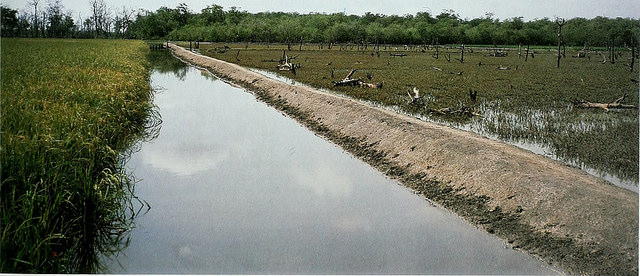
The sub-Saharan region of Africa has more undernourished citizens than any other geographic region in the world, with 60 million extremely malnourished people facing the threat of famine. The question is, why?
War, conflict and political volatility have certainly plagued these countries, but agricultural woes are at the forefront of the food crisis. Ineffective utilization of land and resources have severely limited agricultural production. This, combined with unpredictable weather patterns, has had a devastating impact on food supplies affecting a vast area and populace.
Land and Resources
 Africa is a continent of great agricultural potential with millions of acres of undeveloped land in the sub-Saharan countries alone. Unfortunately, many citizens lack what is necessary to fully realize the potential of the land—things like hardier seeds and plants that yield better crops, fertilizers, and irrigation/watering systems. Often, the same land is farmed over and over again which degrades the soil by removing vital nutrients from the land that are necessary for the production of quality crops.
Africa is a continent of great agricultural potential with millions of acres of undeveloped land in the sub-Saharan countries alone. Unfortunately, many citizens lack what is necessary to fully realize the potential of the land—things like hardier seeds and plants that yield better crops, fertilizers, and irrigation/watering systems. Often, the same land is farmed over and over again which degrades the soil by removing vital nutrients from the land that are necessary for the production of quality crops.
Sub-Saharan farmers are typically small-hold farmers, meaning that they grow cash crops in addition to the food necessary to sustain their own family. These farmers have little chance of earning enough profit to reinvest through expansion, purchasing better seeds and fertilizer, or setting up an irrigation system. What’s more, small-hold farmers may face trade restrictions that inhibit trade with neighboring communities and nations. If the food can’t get to the people, the people can’t eat. And, similarly, if the farmers can’t sell their produce, they can’t earn income. So, the cycle of poverty and malnutrition repeats.
The Weather Forecast
Let’s face it, weather is unpredictable. This spells stress for those who largely depend on the land for their food. Even with aid in the form of imported food, improved farming techniques, and family planning, nature has its own plan and it can thwart any and all efforts for aid.
Climate changes have impacted the region significantly in the last few years. Last year was one of the hottest years on record for the entire continent of Africa. And, El Nino, a weather pattern that causes major disruptions in temperature and precipitation, has contributed to severely dry conditions in this region.
Without irrigation systems, small-hold farmers rely on regular steady rainwater to nourish their crops and animals. So, when rainfall is sporadic, nonexistent or tumultuous, crops suffer and the risk of malnutrition and famine invades their lives like a plague.
Hope for Sub-Saharan Citizens
There are solutions to these problems and in some countries farmers are gaining great insight that will help them win the war against famine; they are beginning to grow more nutritionally rich crops and crops with shorter growing seasons and. In Malawi, farmers have had success exporting products such as tobacco, tea and sugar.
Innovative farming practices such will eventually allow sub-Saharan farmers to more effectively provide for their families and hopefully their neighboring communities in the near future.
If you like this article you may also like: "Less Deadly - Still a Major Concern"
Resources and Further Reading:
The International Business Times:
Our Africa:
http://www.our-africa.org/famine-and-agriculture/famine-and-agriculture
The Alliance for a Green Revolution in Africa (AGRA): Africa Agriculture Status Report 2014
Population Reference Bureau:
agra-DOT-org/wp-content/uploads/2016/04/africa-agriculture-status-report-2014.pdf (Link no longer valid)
Three Successful Sub-Saharan Africa Family Planning Programs:
http://www.fhi360.org/sites/default/files/media/documents/africa-bureau-case-study-report.pdf

